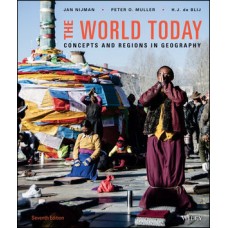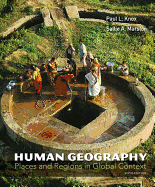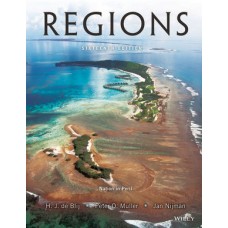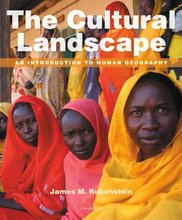Test Bank for Human Geography: People, Place, and Culture, 11th Edition by Fouberg, Murphy, de Blij
$35.00 Original price was: $35.00.$26.50Current price is: $26.50.
Test Bank for Human Geography: People, Place, and Culture, 11th Edition by Fouberg, Murphy, de Blij
This is completed downloadable of Test Bank for Human Geography: People, Place, and Culture, 11th Edition by Fouberg, Murphy, de Blij
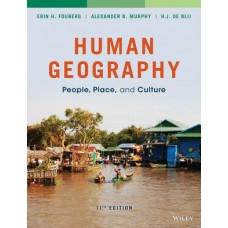
Product Details:
- ISBN-10 : 9781118793145
- ISBN-13 : 978-1118793145
- Author: Fouberg, Murphy, de Blij
Fouberg’s Human Geography, 11th Edition teaches students to appreciate the diversity of people, places, and cultures, and understand the role people play in shaping our world. The goals of this edition are to provide geographic context to global, regional, national and local issues and to teach students to think geographically and critically about these issues. Human Geography: People, Place, and Culture features beautifully designed maps, dozens of vibrant photographs taken by the author team, and author and guest field notes that help students see how geographers read cultural landscapes and use fieldwork to understand places. A newly designed demographic data table includes economic, political, and population data, all of which can be examined in ArcGIS Online.
Table of Content:
- Chapter 1 Introduction to Human Geography
- Field Note: Awakening to World Hunger
- Key Question: What is Human Geography?
- Key Question: What are Geographic Questions?
- Maps in the Time of Cholera Pandemics
- The Spatial Perspective
- Field Note: Glacier National Park, United States
- Key Question: Why do Geographers use maps, And what Do Maps Tell Us?
- Mental Maps
- Generalization in Maps
- Remote Sensing and GIS
- Guest Field Note: Maui, Hawaii by Korine N Kolivras
- Key Question: Why are Geographers Concerned with Scale and Connectedness?
- Regions
- Culture
- Guest Field Note: Montgomery, Alabama by Jonathan Leib
- Connectedness Through Diffusion
- Key Question: What are Geographic Concepts, and How Are They Used in Answering Geographic Questions?
- Rejection of Environmental Determinism
- Possibilism
- Today’s Human Geography
- Chapter 2 Population and Health
- Field Note: Basic Infrastructure
- Key Question: Where in the World do People Live and Why?
- Field Note: Yangon, Myanmar (Burma)
- Field Note: Luxor, Egypt
- Physiologic Population Density
- Population Distribution
- World Population Distribution and Density
- Reliability of Population Data
- Key Question: Why do Populations Rise or Fall in Particular Places?
- Population Growth at World, Regional, National, and Local Scales
- Field Note: Bordeaux, France
- The Demographic Transition
- Future Population Growth
- Key Question: Why Does Population Composition Matter?
- Key Question: How Does the Geography of Health Influence Population Dynamics?
- Infant Mortality
- Child Mortality
- Life Expectancy
- Disease
- Infectious Diseases
- Field Note: Johannesburg, South Africa
- Chronic and Genetic Diseases
- Guest Field Note: Marich Village, Kenya by Elsbeth Robson
- Geographic Influences on Health
- How do Governments Impact Population Change?
- Limitations
- Contradictions
- Chapter 3 Migration
- Field Note: Expanding Slums
- Key Question: What is Migration?
- Cyclic Movement
- Periodic Movement
- Migration
- Key Question: Why do People Migrate?
- Forced Migration
- Push and Pull Factors in Voluntary Migration
- Types of Push and Pull Factors
- Political Circumstances
- Armed Conflict and Civil War
- Environmental Conditions
- Guest Field Note: Plymouth, Montserrat by Jason Dittmer
- Culture and Traditions
- Technological Advances
- Key Question: Where do People Migrate?
- Global Migration Flows
- Guest Workers
- Regional Migration Flows
- Field Note: The West Bank, outside Jerusalem, Israel
- National Migration Flows
- The Special Case of Refugees
- Key Question: How do Governments Affect Migration?
- Legal Restrictions
- Waves of Immigration in the United States
- The Post–September 11 World
- Chapter 4 Local Culture, Popular Culture, and Cultural Landscapes
- Field Note: Preserving Culture
- Key Question: What are Local and Popular Cultures?
- Key Question: How are Local Cultures Sustained?
- Rural Local Cultures
- Guest Field Note: Lindsborg, Kansas by Steven M. Schnell
- Urban Local Cultures
- Local Cultures and Cultural Appropriation
- Field Note: Williamsburg, Brooklyn, New York
- Authenticity of Places
- Field Note: Dingle, Ireland
- Key Question: How is Popular Culture Diffused?
- Hearths of Popular Culture
- Replacing Old Hearths with New: Beating Out the Big Three in Popular Sports
- Stemming the Tide of Popular Culture—Losing the Local?
- Field Note: Seoul, South Korea
- Key Question: How Can Local and Popular Cultures be Seen in The Cultural Landscape?
- Cultural Landscapes of Local Cultures
- Guest Field Note: Paragonah, Utah by Richard Francaviglia
- Chapter 5 Identity: Race, Ethnicity, Gender, and Sexuality
- Field Note: Building Walls
- Key Question: What is Identity, and How are Identities Constructed?
- Race
- Field Note: Drwin, Australia
- Race and Ethnicity in the United States
- Residential Segregation
- Identities Across Scales
- The Scale of New York City
- Guest Field Note: Washington Heights, New York by Ines Miyares
- Key Question: How do Places Affect Identity, and How Can we See Identities In Places?
- Ethnicity and Place
- Identity and Space
- Key Question: How Does Geography Reflect and Shape Power Relationships Among Groups of People?
- Field Note: New York, New York
- Just Who Counts?
- Guest Field Note
- Vulnerable Populations
- Women in Subsaharan Africa
- Field Note: Along the Banks of the Niger River Just Outside Mopti, Mali
- Dowry Deaths in India
- Shifting Power Relations Among Ethnic Groups
- Chapter 6 Language
- Field Note: What Should I Say?
- Key Question: What Are Languages, And What Role do Languages Play in Cultures?
- Language and Culture
- What Is a Language?
- Standardized Language
- Dialects
- Key Question: Why are Languages Distributed the Way They Are?
- Definition and Debate
- Language Formation
- The Languages of Europe
- Languages of Subsaharan Africa
- Key Question: Did Certain Languages Become Dominant?
- Lingua Franca
- Multilingualism
- Official Languages
- The Prospect of a Global Language
- Field Note: Paro, Bhutan
- Key Question: What Role Does Language Play in Making Places?
- The Ten Toponyms
- Toponyms and Globalization
- Changing Toponyms
- Guest Field Note: Greenville, North Carolina by Derek Alderman
- Chapter 7 Religion
- Field Note: Peace Walls
- Key Question: What is Religion, and What Role Does it Play in Culture?
- Field Note: Mombasa, Kenya
- Where Did the Major Religions of the World Originate, and How do Religions Diffuse?
- The World Map of Religions Today
- From the Hearth of South Asia
- From the Hearth of the Huang He River Valley
- From the Hearth of the Eastern Mediterranean
- Field Note: Long Beach, New York
- Field Note: Uluru, Australia
- Key Question: How is Religion Seen in the Cultural Landscape?
- Guest Field Note: Ardmore, Ireland by Mary Lee Nolan
- Sacred Sites of Jerusalem
- Landscapes of Hinduism and Buddhism
- Field Note: Hyderabad, India
- Field Note: Yangon, Myanmar
- Landscapes of Christianity
- Landscapes of Islam
- Key Question: What Role Does Religion Play in Political Conflicts?
- Conflicts Along Religious Borders
- Israel and Palestine
- Nigeria
- Northern Ireland
- Religious Fundamentalism and Extremism
- Chapter 8 Political Geography
- Field Note: Challenging the Political-Territorial Order
- Key Question: How is Space Politically Organized Into States and Nations?
- The Modern State Idea
- Nations
- Nation-State
- Multistate Nations, Multinational States, and Stateless Nations
- Guest Field Note: Cluj-Napoca, Romania by George White
- European Colonialism and the Diffusion of the Nation-State Model
- Construction of the Capitalist World-Economy
- World-Systems and Political Power
- The Enduring Impact of the Nation-State Idea
- Key Question: How do States Spatially Organize Their Governments?
- Form of Government
- Devolution
- Guest Field Note: Interstate 40, Near Blackwell, Arkansas by Paul T. Gray
- Electoral Geography
- Field Note: Honolulu, Hawaii
- Key Question: How are Boundaries Established, and Why do Boundary Disputes Occur?
- Field Note: Piazza della Transalpina
- Establishing Boundaries
- Types of Boundaries
- Boundary Disputes
- Key Question: How Does The Study of Geopolitics Help us Understand the World?
- Classical Geopolitics
- The German School
- The British/American School
- Influence of Geopoliticians on Politics
- Critical Geopolitics
- Geopolitical World Order
- Key Question: What are Supranational Organizations, and What is the Future of the State?
- From League of Nations to United Nations
- Regional Supranational Organizations
- The European Union
- How Does Supranationalism Affect the State?
- Chapter 9 Urban Geography
- Field Note: Ghosts of Detroit?
- Key Question: When and Why Did People Start Living in Cities?
- The Hearths of Urbanization
- The Role of the Ancient City in Society
- Diffusion of Urbanization
- Greek Cities
- Roman Cities
- Urban Growth After Greece and Rome
- Field Note: Rome, Italy
- Site and Situation During European Exploration
- Field Note: Genoa, Italy
- The Second Urban Revolution
- A Second Agricultural Revolution
- The Chaotic Industrial City
- Field Note: Duisburg, Germany
- Key Question: Where are Cities Located and Why?
- Rank and Size in the Urban Matrix
- Central Place Theory
- Hexagonal Hinterlands
- Key Question: How are Cities Organized, and How do They Function?
- Models of the City
- Functional Zones
- The Spatial Organization of the Typical European City
- Modeling the North American City
- Modeling Cities in World Regions
- The South American City
- The African City
- Field Note: Rio de Janeiro, Brazil
- The Southeast Asian City
- Key Question: How do People Shape Cities?
- Shaping Cities in the Global Periphery and Semiperiphery
- Guest Field Note: Manila, the Philippines by Johnathan Walker
- Field Note: Cairo, Egypt City Center
- Shaping Cities in the Global Core
- Field Note: Cairo, Egypt Residential Area
- Field Note: Fort Worth, Texas
- Urban Sprawl and New Urbanism
- Field Note: Celebration, Florida
- Gated Communities
- Urban Geopolitics
- Immigration and the Changing Ethnic Geography of Cities
- The Enduring Impact of Colonialism
- The Informal Economy
- From Colonial to Global CBD
- Key Question:: What Role do Cities Play in Globalization?
- Cities as Spaces of Consumption
- Chapter 10 Development
- Field Note: Geography, Trade, and Development
- Key Question: How is Development Defined and Measured?
- Gross National Income
- Development Models
- Key Question: How Does Geographical Context Affect Development?
- Dependency Theory
- Geography and Context
- Key Question: What Are The Barriers to and the Costs of Development?
- Social Conditions
- Foreign Debt
- Field Note: Buenos Aires, Argentina
- Political Corruption and Instability
- Costs of Economic Development
- Key Question: How do Political and Economic Institutions Influence Uneven Development Within States?
- The Role of Governments
- Field Note: Lower Ninth Ward, New Orleans, Louisiana
- Islands of Development
- Field Note: Port Gentil, Gabon
- Creating Growth in the Periphery of the Periphery
- Guest Field Note: Sukabumi, West Java by Rachel Silvery
- Chapter 11 Agriculture and the Rural Landscape
- Field Note: Changing Greens
- Key Question: What is Agriculture, and Where did Agriculture Begin?
- Hunting, Gathering, and Fishing
- Terrain and Tools
- The First Agricultural Revolution
- Domestication of Animals
- Subsistence Agriculture
- Field Note: Nairobi, Kenya
- Key Question: How did Agriculture Change with Industrialization?
- Understanding the Spatial Layout of Agriculture
- The Third Agricultural Revolution
- New Genetically Modified Foods
- Regional and Local Change
- Guest Field Note: Gambia by Judith Carney
- The Impacts of Agricultural Modernization on Earlier Practices
- Key Question: What Imprint Does Agriculture Make on the Cultural Landscape?
- Villages
- Functional Differentiation Within Villages
- Key Question: How is Agriculture Currently Organized Geographically, and How has Agribusiness Influenced the Contemporary Geography of Agriculture?
- Field Note: Dunedin, New Zealand
- The World Map of Climates
- The World Map of Agriculture
- Political Influences on Agriculture
- Sociocultural Influences on Agriculture
- Agribusiness and the Changing Geography of Agriculture
- Environmental Impacts of Commercial Agriculture
- The Challenge of Feeding Everyone
- Chapter 12 Industry and Services
- Field Note: Containing the World-Economy
- Key Question: Where did the Industrial Revolution Begin, and How did it Diffuse?
- The Industrial Revolution
- Diffusion to Mainland Europe
- Field Note: Rouen, France
- Diffusion Beyond Europe
- Key Question: How Have the Character and Geography of Industrial Production Changed?
- Fordist Production
- Flexible Production and Product Life Cycle
- The Global Division of Labor
- Flexible Production of Nike
- Distribution in the Commodity Chain
- Outsourcing: Business Product Outsourcing and Global Sourcing
- Made in America or Designed in America?
- Major Influences on the Contemporary Geography of Manufacturing
- New Centers of Industrial Activity
- Field Note: Humen, China
- Field Note: Beijing, China
- Key Question: How Have Deindustrialization and the Rise of Service Industries Altered the Economic Geography of Production?
- Geographical Dimensions of the Service Economy
- Guest Field Note: Fayetteville, Arkansas by Fiona M. Davidson
- High-Technology Clusters
- Tourism Services
- Place Vulnerabilities in a Service Economy
- Chapter 13 The Humanized Environment
- Field Note: Disaster Along Indian Ocean Shores
- Key Question: How has Earth’s Environment Changed Over Time?
- Tectonic Plates
- Ocean and Atmosphere
- Fire and Ice
- Field Note: The Southeast Coast of the Big Island of Hawaii
- The Little Ice Age in the Modern Era
- Key Question: How Have Humans Altered Earth’s Environment?
- Water
- Field Note: Tuscon, Arizona
- Atmosphere
- The Land
- Field Note: Para, Brazil
- Biodiversity
- Key Question: What are The Major Factors Contributing to Environmental Change Today?
- Political Ecology
- Guest Field Note: Try, Mali by William Moseley
- Population
- Patterns of Consumption
- Industrial Technology
- Transportation
- Energy
- Key Question: What is the International Response to Climate Change?
- Biological Diversity
- Protection of the Ozone Layer
- Global Climate Change
- Water Scarcity
- Chapter 14 Globalization and The Geography of Networks
- Field Note: Happiness Is in the Eye of the Beholder
- Key Question: How have Identities Changed in a Globalized World?
- Personal Connectedness
- Guest Field Note: Columbine, Colorado by Kenneth E. Foote
- Key Question: What is Globalization, and What Role do Networks Play in Globalization?
- Field Note: Porto Alegre, Brazil
- Networks
- Time–Space Compression
- Key Question: How do Networks Operate in a Globalized World?
- Networks with a Social Focus
- Networks and Information
- Networks and Economic Exchange
- Appendix A: Maps
- Appendix B: Area and Demographic Data for the World’s States
- Appendix C Glossary
- The Wonderful World of Ap® Human Geography
- Index
People Also Search:
human geography people place and culture 11th edition
human geography people place and culture 11th edition download scribd
human geography people place and culture 11th edition test bank download pdf
You may also like…
Test Bank
Test Bank for Geography: Realms, Regions, and Concepts, 16th Edition by de Blij, Muller, Nijman
Solution Manual
The Cultural Landscape An Introduction to Human Geography Rubenstein 11th Edition Solutions Manual




